Stepping into a home perfectly preserved from the 1970s is like walking into a time capsule, a vibrant and often surprising glimpse into a bygone era of interior design and domestic life. These untouched relics stand in stark contrast to the open-concept, minimalist aesthetics prevalent in modern homes, offering a unique blend of bold choices and now-outdated functionalities. From distinctive color palettes to specific structural elements, these houses retain a charm (or a challenge!) that can only be found when time has literally stood still. Let’s explore some of the unmistakable hallmarks of these remarkably preserved ’70s abodes.
1. Avocado Green or Harvest Gold Kitchen Appliances
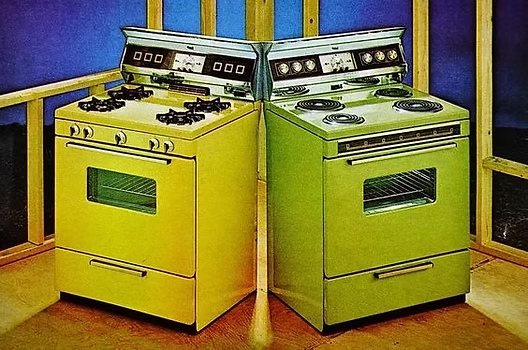
The absolute kings of the 1970s kitchen were appliances in avocado green or harvest gold. These muted, earthy tones were the height of contemporary kitchen style, found on everything from refrigerators and ovens to dishwashers and even smaller appliances like toasters. They were considered fashionable, a departure from the stark whites and pastels of previous decades. According to interior design retrospectives from Architectural Digest, these colors were a deliberate move towards more “natural” and less sterile kitchen aesthetics.
Today, kitchen appliances are overwhelmingly stainless steel, black, or white, making these vintage colored units immediately stand out as relics of a past era. Their presence instantly dates a kitchen, signaling that a significant renovation hasn’t occurred in decades. They are the ultimate telltale sign of a ’70s untouched kitchen.
2. Wood Paneling on Almost Every Wall
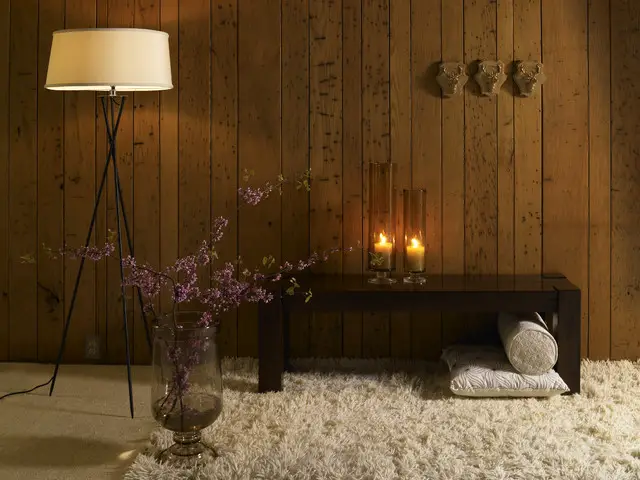
While wood paneling sometimes made appearances in mid-century homes, the 1970s took it to an extreme, often covering entire rooms or even entire basements in thin, dark wood panels. This trend aimed to create a cozy, rustic, or den-like atmosphere, and it was relatively inexpensive to install. As detailed by building material histories from the National Association of Realtors, paneling offered an affordable and quick way to finish interior walls.
Modern design largely shies away from extensive wood paneling, preferring painted drywall for a brighter, more open feel. Walking into a living room or den completely swathed in dark wood paneling today immediately screams “1970s.” It’s a heavy look that most contemporary renovators are quick to remove or paint over.
3. Shag Carpeting (Especially in Bold Colors)
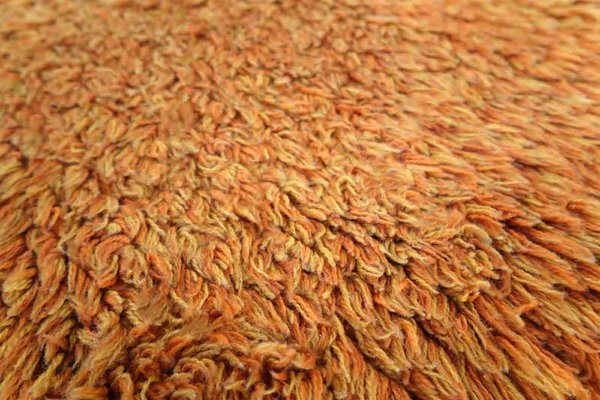
Few things scream “1970s” louder than wall-to-wall shag carpeting, often in incredibly bold and surprising colors like avocado green, burnt orange, or even bright blue. This thick, luxurious-feeling carpet was designed for comfort and a touch of bohemian flair, providing a soft surface underfoot. Fashion and home decor trends of the era, as chronicled by sources like Apartment Therapy, embraced the tactile and often vibrant nature of shag.
Today’s flooring trends favor hard surfaces like hardwood, laminate, or low-pile, neutral-colored carpets. The deep, often matted fibers of vintage shag carpeting, combined with its vibrant hues, are an undeniable sign of a home untouched by modern renovations. It’s a trip hazard and a dust magnet by today’s standards.
4. Sunken Living Rooms or “Conversation Pits”
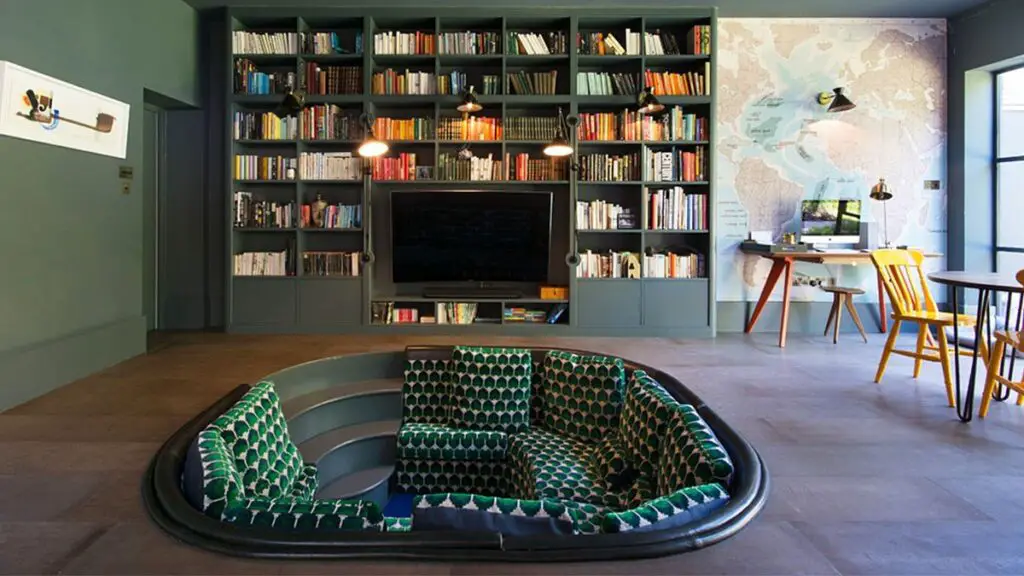
A hallmark of ’70s architecture was the sunken living room or the more intimate “conversation pit,” often found in the center of the main living area. These lowered spaces aimed to create a distinct, cozy zone within an otherwise open floor plan, fostering a sense of intimacy and focused interaction. Design trends of the era, as explored in architectural analyses by Dwell Magazine, often sought to define spaces without using traditional walls.
While a design curiosity, these features are rarely seen in new builds today due to safety concerns (trip hazards!), accessibility issues, and the desire for continuous, seamless flooring. Walking down into a living room instantly places you in a ’70s aesthetic that hasn’t seen an update. Urban planning and design critiques often discuss how modern homes prioritize universal accessibility and fluid movement.
5. Harvest Gold or Avocado Green Bathrooms (Toilets, Sinks, Tubs)
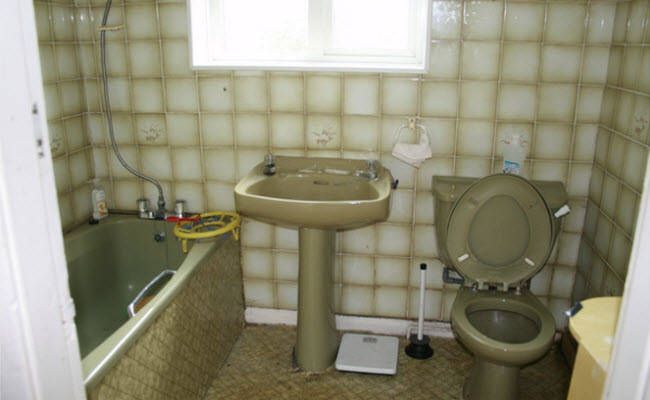
Just like kitchen appliances, bathroom fixtures in avocado green or harvest gold were incredibly popular in the 1970s. From toilets and sinks to bathtubs, these colored porcelain pieces created a distinctive, coordinated look in the bathroom.
Modern bathrooms almost exclusively feature white, off-white, or sometimes black fixtures for a clean and timeless look. Encountering a full suite of green or gold bathroom fixtures is an undeniable sign of an untouched ’70s home, often requiring a full gut renovation for a contemporary update.
6. Orange and Brown Color Palettes Everywhere
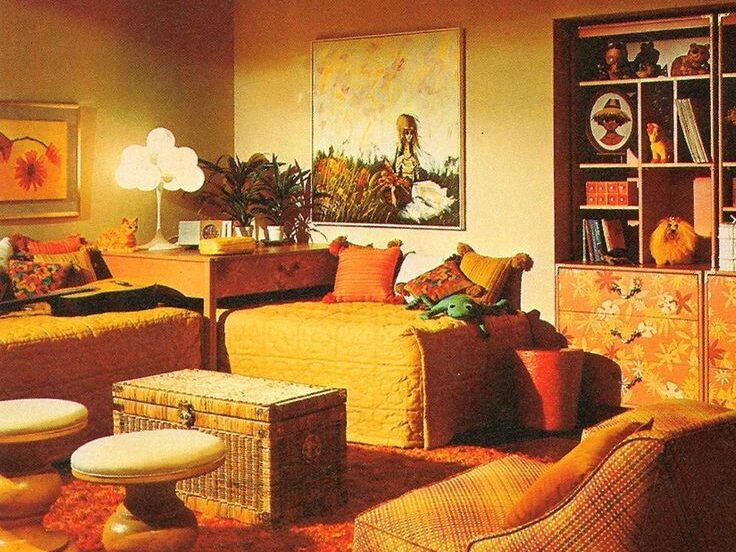
The dominant interior color palette of the 1970s often revolved around warm, earthy tones like burnt orange, various shades of brown, avocado green, and mustard yellow. These colors were used extensively on walls, furniture, and textiles, creating a cohesive, if sometimes overwhelming, aesthetic.
Today’s popular color palettes tend to lean towards cooler neutrals, grays, whites, and softer blues/greens. A home saturated in ’70s oranges and browns immediately dates itself, standing in stark contrast to current design trends.
7. Popcorn Ceilings
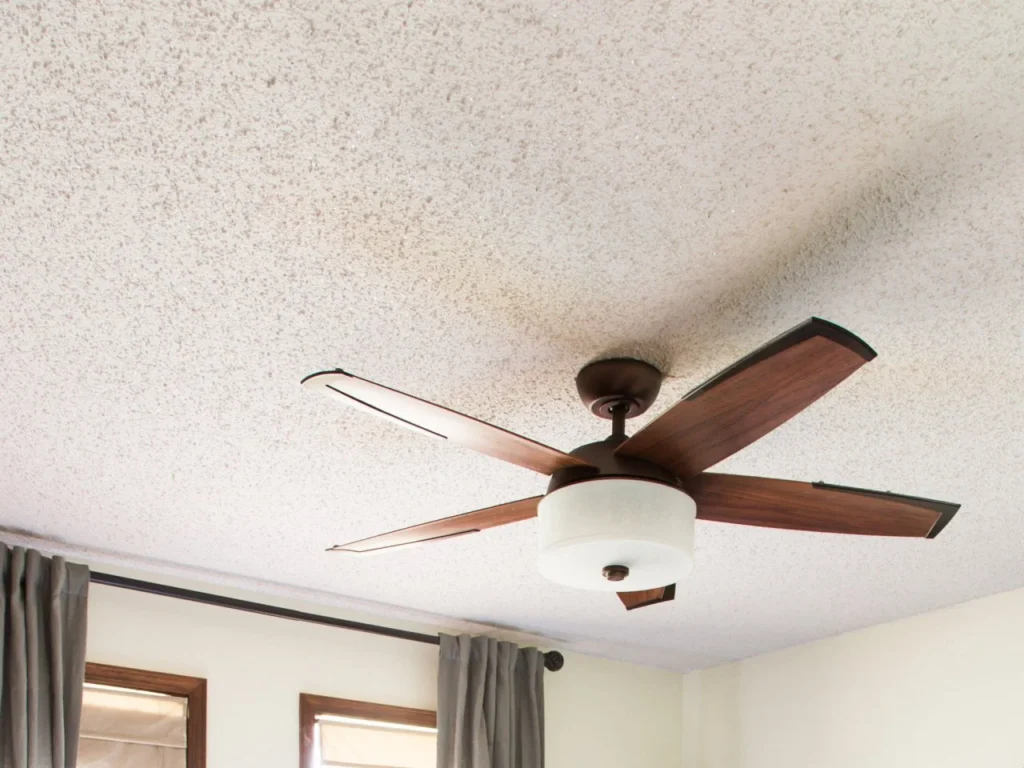
Popcorn ceilings, characterized by their bumpy, textured finish, were incredibly common in the 1970s and 1980s. They were a cheap way to hide imperfections, absorb sound, and were thought to add a decorative element.
Modern homes almost universally feature smooth, flat ceilings. The presence of popcorn ceilings throughout a home is a very strong indicator that it hasn’t seen significant interior renovation since the ’70s. Many homeowners today pay to have them professionally removed due to aesthetic and sometimes health (asbestos in older versions) concerns.
8. Gold or Brass Fixtures (Often in Shiny, Ornate Styles)
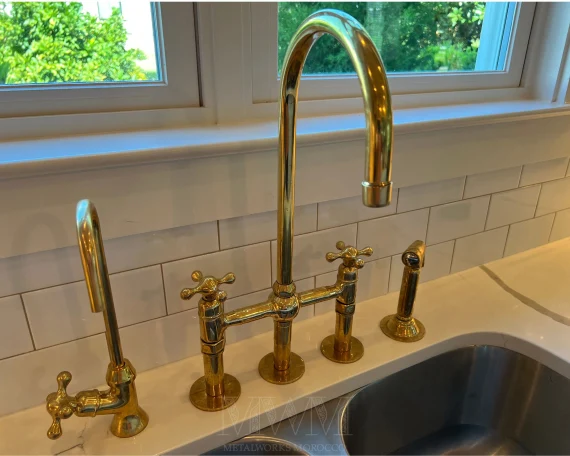
The ’70s loved gold and brass, particularly in very shiny, often ornate finishes, for light fixtures, doorknobs, and bathroom faucets. This gave homes a sense of opulence and warmth, a contrast to the more minimalist chrome that would come later.
Today’s trends favor brushed nickel, matte black, or brushed gold/brass with cleaner lines. Walking into a home with an abundance of shiny, highly polished, and often intricately designed gold or brass fixtures instantly tells you it’s a ’70s original.
9. Dark, Heavy Wood Cabinetry
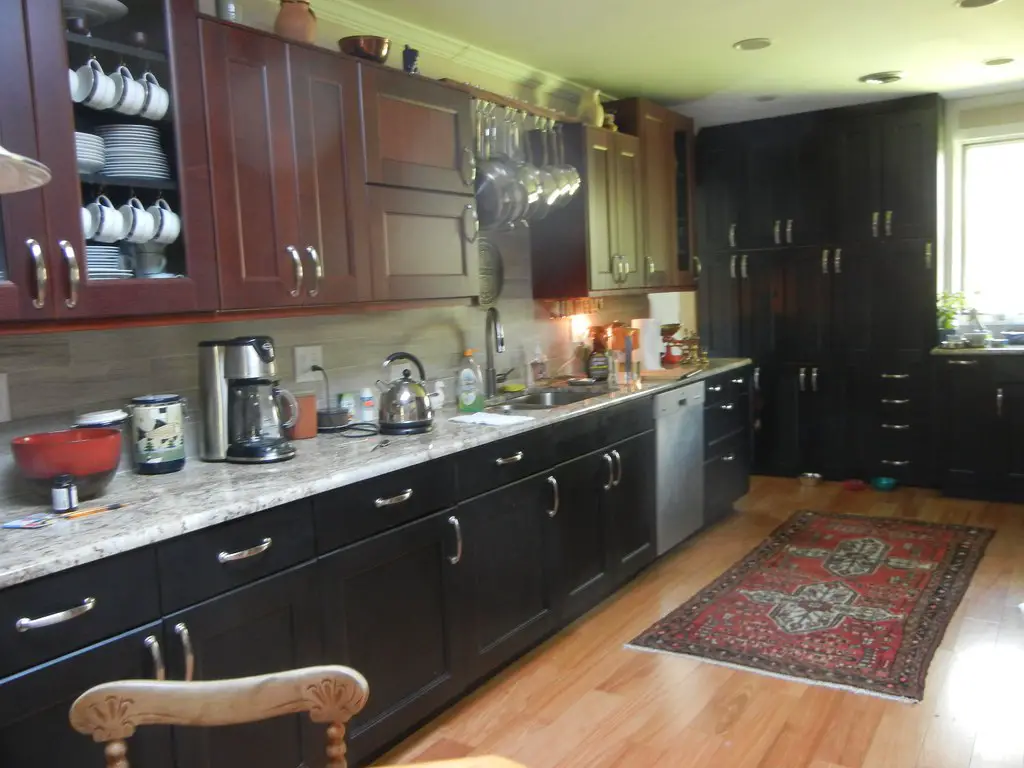
Kitchens in ’70s homes often featured dark, heavy wood cabinetry, usually with flat or very simple panel doors, sometimes with visible wood grain or even a slightly orange tint. These cabinets were built to be durable but often lacked the modern organizational features.
Modern kitchens tend to favor lighter wood tones, painted cabinets (especially white or gray), or sleek, handle-less designs. The sight of a kitchen filled with original dark ’70s wood cabinets immediately marks the space as untouched by contemporary updates.
10. Patterned Wallpaper (Especially Large, Bold Prints)
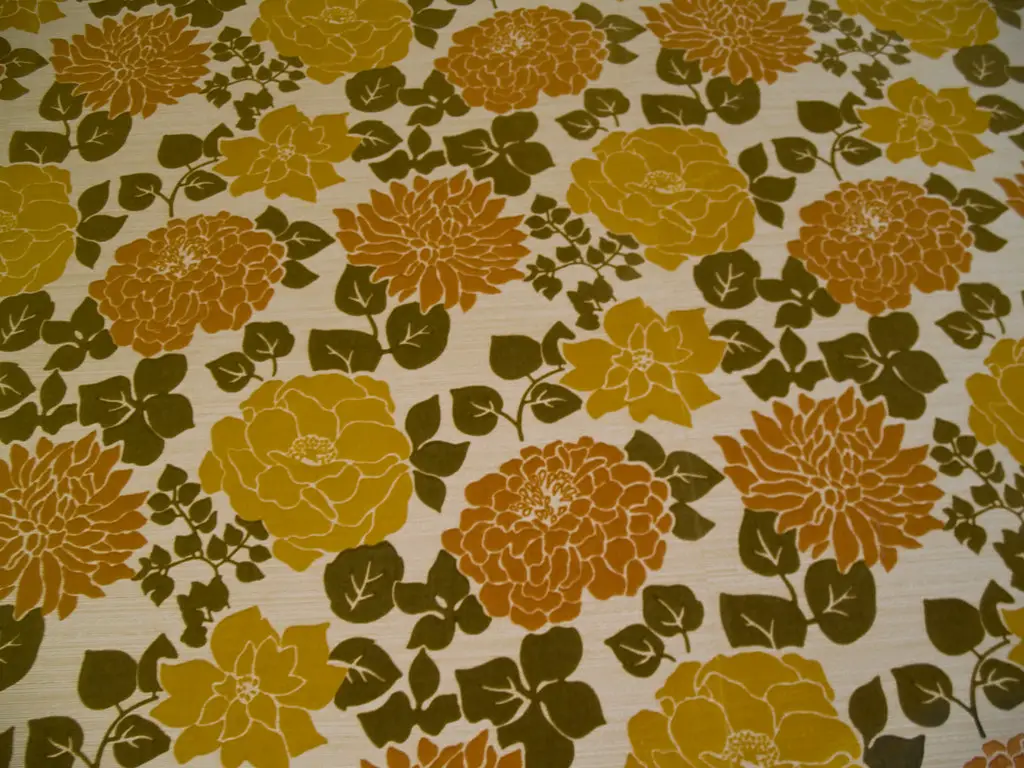
Wallpaper was a huge trend in the 1970s, often featuring large, bold geometric patterns, floral designs, or even abstract motifs, frequently in the era’s signature earthy or bright color palettes. It was used to add personality and visual interest to rooms.
While wallpaper has made a comeback, today’s patterns are generally more subtle, textured, or used as accent walls. A home with multiple rooms still adorned in original ’70s bold, patterned wallpaper is a clear sign it hasn’t been redecorated in decades.
11. Built-In Recessed Light Fixtures with Gold Trim
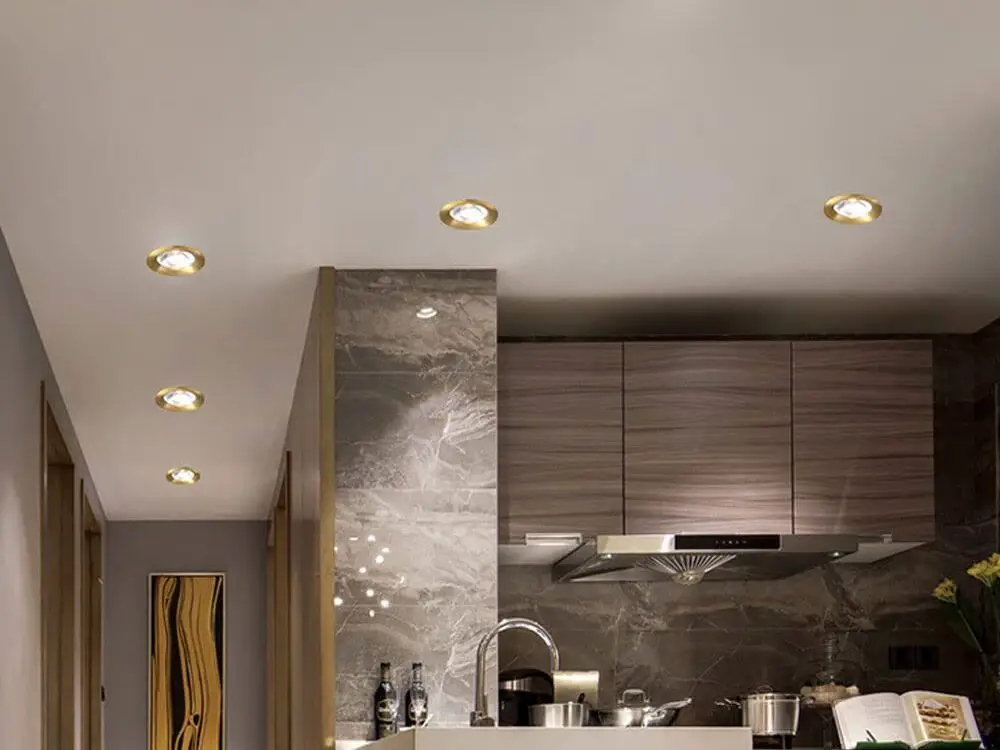
Many ’70s homes featured built-in recessed lighting, but often with a distinctive touch: a gold or brass trim ring around the bulb. This design element reflected the decade’s preference for warmer metals and integrated lighting solutions.
Modern recessed lighting is typically designed to be less conspicuous, often featuring white or black trims that blend seamlessly with the ceiling. The sight of numerous gold-trimmed recessed lights immediately points to a 1970s installation that hasn’t been updated.
12. Carpeted Bathrooms
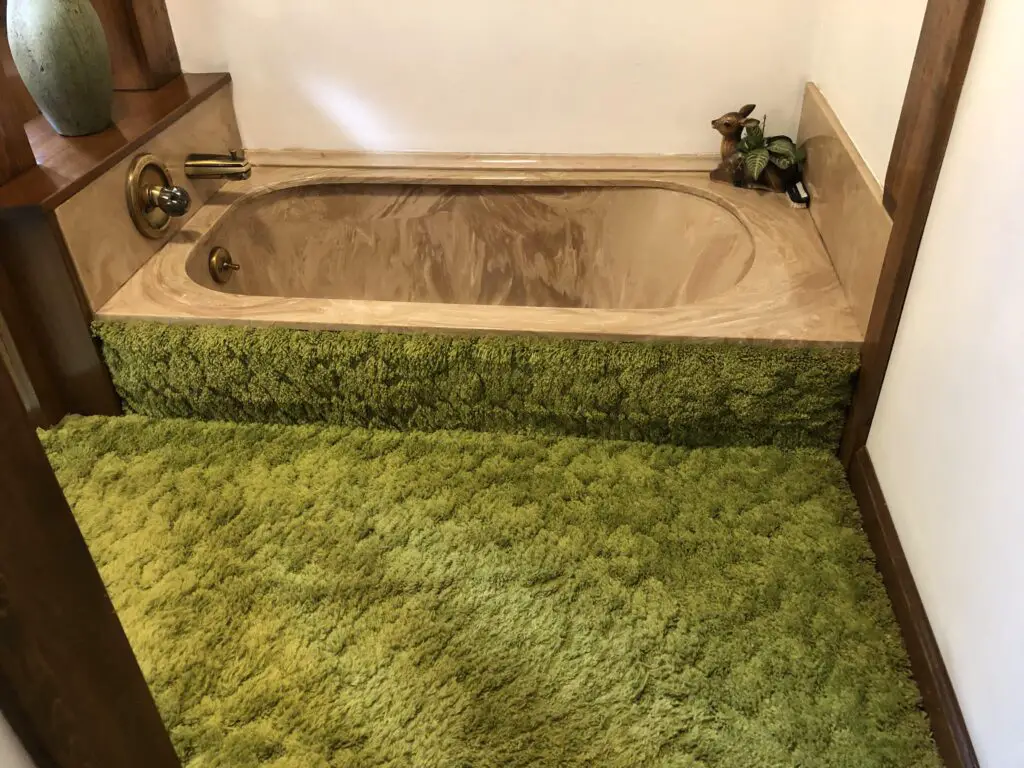
Perhaps one of the most puzzling trends from the 1970s was the carpeted bathroom, sometimes even extending into the area around the toilet. This was intended to add warmth and softness to what could otherwise be a cold, tiled space.
Today, carpeting in bathrooms is almost universally avoided due to hygiene concerns, moisture retention, and difficulty in cleaning. Discovering a carpeted bathroom is an unmistakable, and often startling, sign that a house remains in its original ’70s glory.
